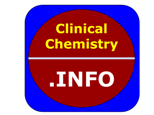Clin Chem Lab Med. 2025 Sep 12. doi: 10.1515/cclm-2025-1159. Online ahead of print.
ABSTRACT
OBJECTIVES: Oral squamous cell carcinoma (OSCC) is the most prevalent form of squamous cell carcinomas of the head and neck (SCCHN), accounting for over 90 % of all oral cavity malignancies (approximately 275,000 new cases are worldwide diagnosed annually). Early-stage oral squamous cell carcinoma (T1 and T2) has a 5-year survival rate of up to 80 %. Survival rates decrease to 20-30 % at later stages (T3-T4). Each year, there are between 275,000 and 300,000 new cases of OSCC, and over 150,000 deaths worldwide. OSCC are usually non-hereditary tumors, although familial epidemiology has been recently reported.
METHODS: From 2022 to 2024, we enrolled 56 patients from the complex structure of maxillofacial surgery and ORL, National Cancer Institute – IRCCS – Fondazione G. Pascale. The individuals enrolled underwent molecular testing via a multigene panel of 56 genes related to cancer predisposition customized in our laboratory. The panel included BRCA1 and BRCA2.
RESULTS: We identified a total of 7 pathogenic mutations annotated in clinical databases as ClinVar, in BRCA2 (two different variants), BRCA1, MUTYH, BRIP1, FANCM and FANCC genes (approximately 12.5 % of our patients). The results show a frequent predisposition to head and neck tumors similar to or even greater than that observed in other types of neoplasia, such as breast and ovarian cancers or colon cancer), with a predisposition of approximately 10 %.
CONCLUSIONS: Our results confirm that, similarly to other more studied tumors, predictive genomic medicine can play a crucial role in the early identification of germline mutations in head and neck cancers. This approach should be considered for the early detection of OSCC particularly for individuals at increased risk, e.g., those with a family history of the disease, who may also be candidates for targeted molecular therapies based on their genetic profile.
PMID:40965863 | DOI:10.1515/cclm-2025-1159
